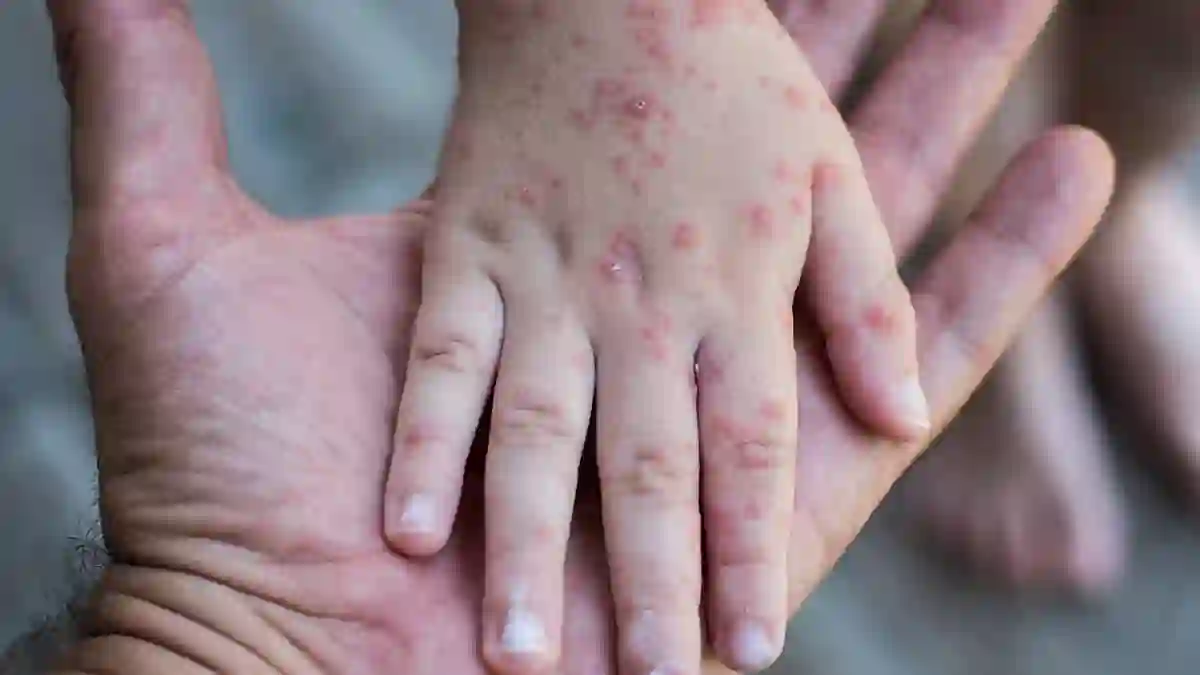Just as New York City is dealing with a deadly outbreak of Legionnaires’ disease, another contagious illness is beginning to make the rounds—especially among young children.
Doctors are now turning their attention to a sharp rise in hand, foot, and mouth disease (HFMD), a viral infection known for its telltale rashes and painful mouth sores.
And it’s not just a local issue. This uptick isn’t isolated to New York—cases are appearing across the eastern United States, with warnings coming in from multiple states.
The States Already Seeing a Spike
While only a handful of cases have been reported in New York’s Staten Island so far, several other states are already seeing a steady rise.
Places like Maryland, Pennsylvania, New Jersey, Virginia, Ohio, Kansas, and West Virginia are all reporting increased HFMD activity.
Doctors in these areas are sounding the alarm, saying the virus is spreading faster than usual for this time of year—and they’re seeing more cases than they’ve witnessed in a long time.
What Is HFMD and Who’s Most at Risk?
HFMD is caused by a group of viruses, most commonly coxsackievirus A16.
It tends to strike young children, especially those under 10, because their immune systems aren’t as robust as adults’.
Adults can catch it too—especially if they’re immunocompromised—but it’s far more common in schools, daycare centers, summer camps, and playgrounds.
The virus leads to a mix of unpleasant symptoms: fever, sore throat, vomiting, and a distinctive rash with painful lesions that appear on the hands, feet, and inside the mouth.
Pediatricians Sound the Alarm
Doctors on the front lines are seeing worrying trends. Dr. Edith Bracho-Sanchez from Columbia University Irving Medical Center said she’s seen more HFMD cases in just a few weeks than she’s seen in the last ten years combined.
And it’s not just her. Dr. Natasha Burgert, a pediatrician in Kansas and spokesperson for the American Academy of Pediatrics, confirmed she’s seeing the same sudden surge.
“What I’m seeing in my own practice mirrors the surge my colleagues are reporting nationwide,” she told The New York Times.
Why Summer Makes Things Worse
Every summer and early fall, HFMD cases tend to rise.
Why? Kids are on the move—visiting water parks, swimming pools, summer camps, and starting back at school.
All of these environments create perfect conditions for the virus to spread.
Researchers also believe the warm, humid weather may help the virus survive longer, making it easier to pass from one child to another.
How the Virus Spreads So Quickly
HFMD is incredibly contagious. It can spread through sneezes and coughs, from blister fluid, and even from touching surfaces or toys contaminated with the virus.
It can also pass through unwashed hands after using the bathroom or from swallowing water in a public pool.
And yes, water parks can be a breeding ground.
One in Philadelphia had to temporarily shut down in July after a child came down with HFMD shortly after visiting.
Symptoms to Watch Out For
Symptoms typically start with a fever, sore throat, and reduced appetite.
Then come the signature rashes or blisters, usually on the hands, feet, and in the mouth.
Most kids recover in about 7–10 days. But in some severe cases—especially among infants and toddlers—HFMD can lead to complications like seizures, caused by inflammation around the brain.
No Vaccine, But Treatment Can Help
There’s currently no vaccine or specific cure for HFMD, but it can be managed at home.
Doctors recommend over-the-counter medications like acetaminophen or ibuprofen to ease fever and mouth pain.
Staying hydrated is also crucial, as painful mouth sores can make swallowing water difficult and increase the risk of dehydration.
Keep Sick Kids at Home
If a child is diagnosed with HFMD, it’s important to keep them home for at least a week.
That gives the virus enough time to stop being contagious and helps reduce the risk of spreading it to classmates or other children in close contact.
Experts say that while most cases are mild, it’s essential to remain cautious—especially in places where kids are grouped together.
HFMD Isn’t New, But This Surge Is Unusual
While HFMD isn’t a new threat—with estimates suggesting around 10 to 15 million U.S. cases each year—the speed and scale of the current spread has caught doctors’ attention.
So if you’re a parent, especially on the East Coast, it might be time to keep a close eye on symptoms and prioritize hygiene—because this summer, it’s not just bug bites and sunburns making kids uncomfortable.

